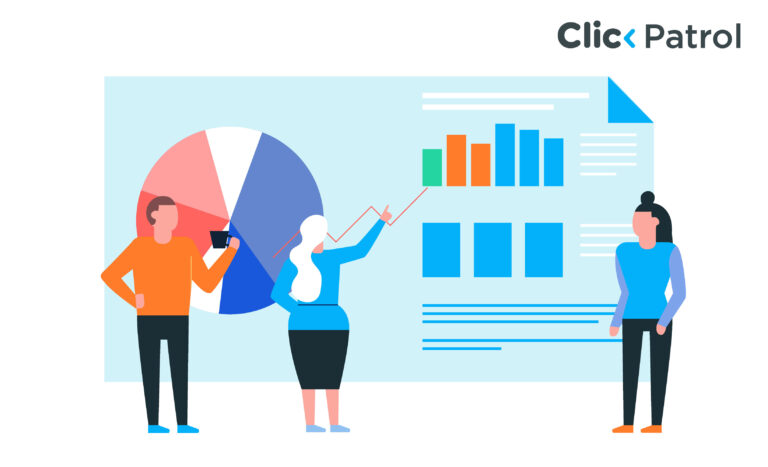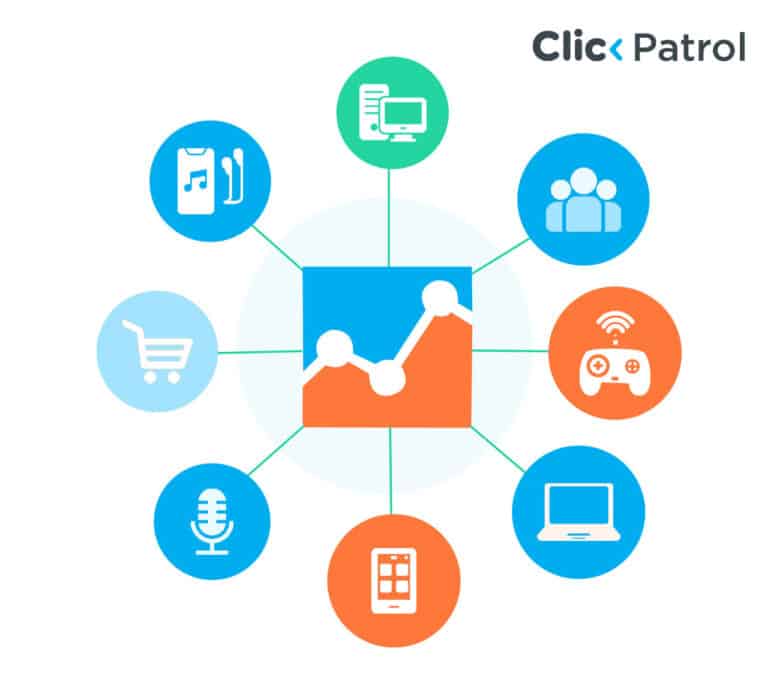
Understanding Click Fraud and Webflow
Abisola Tanzako | Mar 14, 2024

Table of Contents
Does click fraud exist within Webflow?
In today’s digital world, the primary goal of business owners is to build an exceptional website.
Well-designed websites capture attention and leave a lasting impression on your visitors. Otherwise, it can leave them frustrated and disinterested, deterring visitors from learning more about your business. Webflow stands out as an excellent platform to build stunning websites.
Webflow is a great website builder that helps create visually appealing websites. It is also a powerful tool for responsive web design, enabling users to design, build, and launch dynamic websites. This versatility makes it an invaluable resource in the digital marketing world.
While Webflow facilitates the creation of compelling online experiences, it’s essential to remain vigilant against detrimental practices like click fraud that can compromise these digital platforms. A comprehensive understanding of click fraud and Webflow is crucial for effectively navigating the intricate web of today’s internet.
This article aims to understand click fraud and Webflow comprehensively, their relationship, impact on Webflow, mitigation strategies and frequently asked questions for further clarity.
What is Click Fraud?
Click fraud is a deceptive tactic in pay-per-click (PPC) online advertising. It involves the artificial inflation of a website’s perceived popularity through fraudulent clicks. This fraudulent activity occurs when an individual, an automated script, or a computer program mimics a genuine internet user using a web browser, clicking on an ad without interest in the ad’s link target.
There are two primary motivations behind committing click fraud: first, to be used as a strategy to reduce competition among advertisers by draining their advertising budget. Secondly, to generate illegitimate revenue from the host website or drain funds from the advertiser.
This deceptive practice poses a significant challenge in the digital advertising landscape, undermining the integrity of online metrics and causing financial losses for advertisers.
What is Webflow?
Webflow is a powerful Software as a Service (SaaS) platform that empowers designers to build responsive websites using a visual editing interface that operates directly in the browser. Webflow enables users to craft websites with a professional aesthetic without writing any code.
As designers utilize Webflow, the platform seamlessly generates the requisite HTML, CSS, and JavaScript, automating the coding process. This unique feature allows anyone, regardless of their coding proficiency, to create visually stunning websites with advanced features such as parallax scrolling and intricate animations.
Additionally, Webflow is not just a website-building tool; it’s a comprehensive solution that can significantly enhance the efficiency of visual designers and website builders.
By streamlining the design process, Webflow allows these
experts to concentrate on the creative parts of web design, fostering innovation and enhancing productivity. In essence, Webflow naturalizes web design, making it available to all while upholding high standards and professionalism.
The relationship between click fraud and Webflow
At first, Click Fraud and Webflow may appear to have no connection. However, their paths cross in the digital advertising world. Companies that utilize Webflow for website creation often incorporate Pay-Per-Click (PPC) advertising into their marketing plans. Unfortunately, these PPC campaigns are vulnerable to click fraud.
This fraudulent activity can lead to inflated advertising expenses and distorted analytical data, presenting a significant challenge for businesses striving for accurate marketing insights and cost-effective strategies. Hence, despite appearing unrelated, click fraud and Webflow are significantly linked within the broader scope of digital marketing.
Impact of Click Fraud on Webflow
Click fraud poses a substantial challenge for businesses that use Webflow. When a website developed with Webflow hosts Pay-Per-Click (PPC) ads, it becomes a potential target for ClickFraud. This fraudulent activity involves generating fake clicks on the ads, which can lead to swift exhaustion of the advertising budget without any genuine user engagement or conversion.
The impact of ClickFraud is not just financial. It also hampers businesses’ ability to measure their advertising campaigns’ effectiveness accurately. The inflated click data can distort the analytics, making it challenging for companies to derive meaningful insights from their campaign data. This could strain their resources as they invest more in ineffective campaigns based on skewed data.
In the context of Webflow, click fraud can manifest in various ways. It can target visually engaging websites, exploit e-commerce integrations, misuse customizable forms, and manipulate dynamic content. Fraudsters can exploit each of these aspects to carry out click fraud, thereby affecting the overall performance and integrity of the website. Here is how:
- Engaging websites:
Click fraud is commonly directed at websites with high user engagement. The robust design features of Webflow can become a magnet for fraudsters searching for impactful ad placements. These sites provide a lucrative opportunity for fraudulent clicks, significantly impacting businesses relying on accurate click data for their marketing strategies.
- Exploit e-commerce integrations:
Webflow’s seamless integration with various e-commerce platforms makes it an attractive target for fraudsters. These individuals aim to manipulate product sales figures or initiate illegitimate transactions. This is a major worry as it could result in inflated sales data and unauthorized transactions, which can have severe implications for businesses relying on accurate sales data for their operations and strategies.
- Misuse customization forms (Adaptable forms):
Adaptable forms, such as lead capture or contact forms, present a potential vulnerability that click fraudsters can exploit. These fraudsters can manipulate these forms to submit false entries, distorting the collected data. This fraudulent activity can significantly impact businesses that rely on this data for decision-making, as it can skew their understanding of customer behavior and preferences.
Therefore, the adaptability of forms in Webflow, while a strength in terms of customization, can also be a potential avenue for click fraud.
- Manipulate dynamic content (Interactive content):
Webflow’s interactive content features, while enhancing the user experience, can unfortunately be misused by fraudsters. These individuals can insert malicious code or create deceptive ad placements that mimic genuine content.
This can lead to users interacting with fraudulent content under the guise of legitimacy. Such activities compromise the website’s integrity, leading to skewed analytics and potential security risks. Therefore, while interactive content is a powerful tool for engagement, it also opens avenues for exploitation by click fraudsters.
How to mitigate click fraud in Webflow
Mitigating click fraud in Webflow requires a well-rounded approach.
- The first step in mitigating click fraud involves setting up strong filters to block known harmful IP addresses. This strategy is effective as it can prevent fraudulent clicks originating from these sources, providing a first line of defense against click fraud.
- The second step in combating click fraud involves studying and monitoring the use of dedicated click fraud prevention software such as ClickPatrol. These sophisticated tools can detect and block dubious clicks in real time, safeguarding against click fraud. This real-time protection is crucial in minimizing the impact of fraudulent activities on your digital marketing efforts.
- The last step in mitigating click fraud involves using geo-targeting for your ads. By focusing your ads on specific geographical places where your potential customers are situated, you can substantially decrease your ads’ exposure to fraudsters. This strategy minimizes the risk of click fraud and ensures that your ads reach the right audience, optimizing your advertising efforts.
This approach reduces the likelihood of becoming a victim of click fraud and boosts the effectiveness of your advertising campaigns. By ensuring that the intended audience views your ads, you can optimize your advertising efforts, leading to better engagement and potentially higher conversion rates.
Conclusion
ClickFraud is a primary concern in digital advertising, causing significant financial losses for advertisers and skewing online metrics. This fraudulent activity can inflate the cost-per-click, leading to an increased advertising budget without a corresponding increase in genuine user engagement or conversion.
This not only strains the financial resources of businesses but also skews their understanding of customer behavior and preferences, which can have far-reaching implications for their marketing strategies.
Despite the significant threat posed by click fraud, platforms like Webflow provide hope for businesses aiming to establish a significant online presence. Webflow is a design tool that empowers companies to craft visually appealing and exceptionally functional websites.
By understanding the risks associated with online advertising
and actively working to reduce these risks, businesses can confidently leverage the power of Webflow to navigate the digital landscape.
With this comprehensive guide, we hope you will achieve the target goal of your business, not only in establishing a solid online presence and upholding the integrity of your digital marketing efforts. This will enable your business to confidently and efficiently traverse the digital landscape.
FAQs
Q.1 What are the motivations behind click fraud?
The primary motivations for committing click fraud are to reduce competition among advertisers by draining their advertising budget and to generate illegitimate revenue from the host website or drain funds from the advertiser.
Q.2 Are Webflow websites more vulnerable to click fraud?
Webflow websites are not primarily more vulnerable to click fraud than other websites. The risk of click fraud is present for any website that utilizes paid advertising.
Q.3 What are the implications of click fraud for Webflow users?
Click fraud can lead to inflated advertising expenses and distorted analytical data for businesses that use Webflow and incorporate PPC advertising into their marketing plans.
Q.4 How can I safeguard my Webflow website against click fraud?
- Use a click fraud detection software: ClickPatrol screens your ad traffic and detects abnormal patterns that could indicate fraudulent or invalid clicks.
- Keep a close eye on your website analytics: Be vigilant about unusual surges in traffic, high bounce rates, or traffic originating from unexpected geographical locations.
- Optimize your ad targeting strategy: Ensure your ads reach the correct audience and geographical areas.

